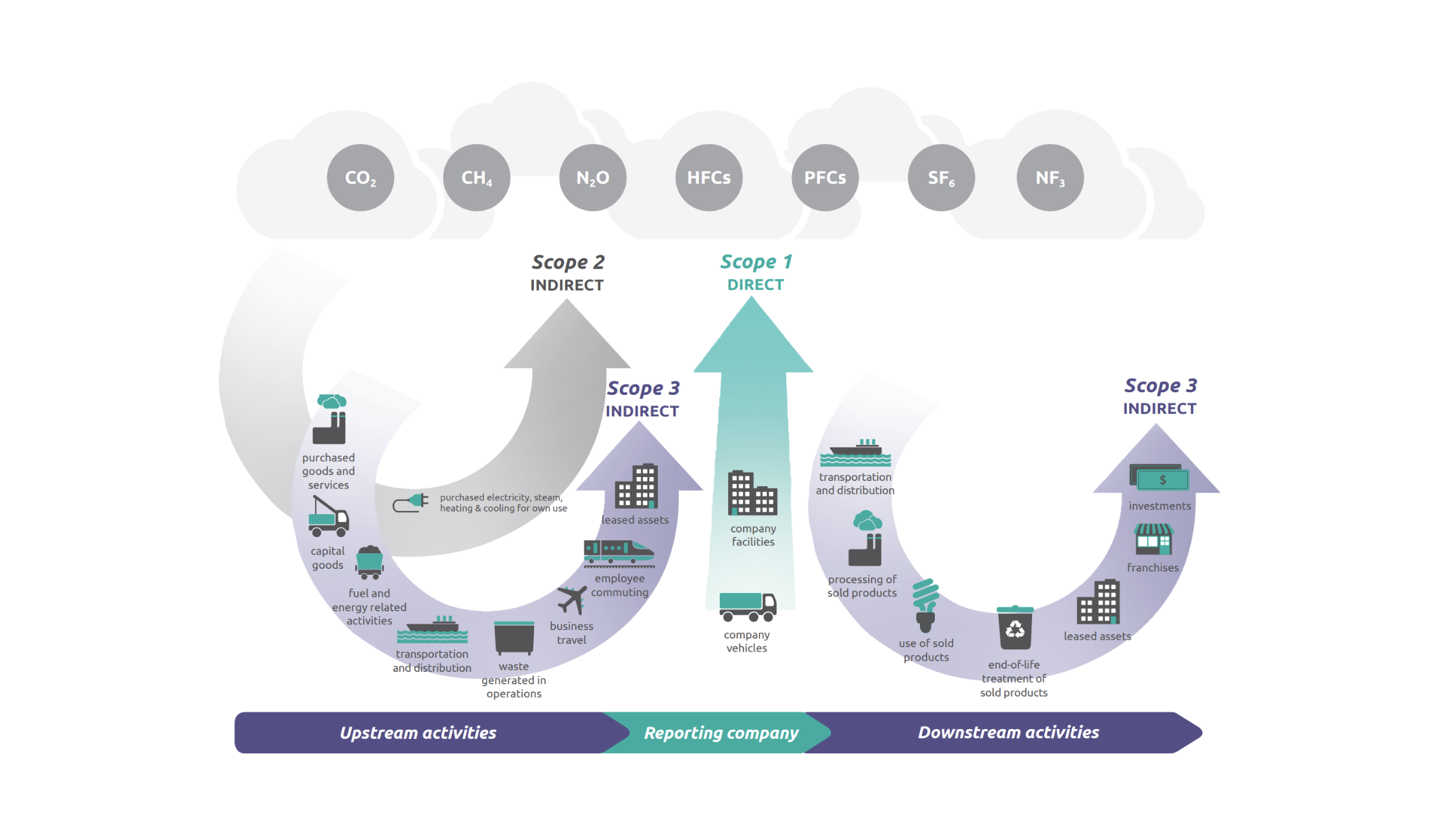Understanding Scope 1, Scope 2, and Scope 3 Emissions: A Complete Overview
As businesses strive to reduce their carbon footprint and embrace sustainability, it becomes crucial to understand the different types of emissions that contribute to their overall environmental impact. In carbon accounting, emissions are categorised into three scopes: Scope 1, Scope 2, and Scope 3. Let's delve into each scope to gain a comprehensive understanding of their significance and how they contribute to corporate sustainability efforts.
Scope 1 Emissions
Scope 1 emissions refer to direct greenhouse gas (GHG) emissions that occur from sources that are owned or controlled by the company. This includes emissions from activities such as combustion of fossil fuels in company-owned vehicles, onsite fuel combustion in boilers, or industrial processes. These emissions are considered the most direct and within the direct control of the company.
Scope 2 Emissions
Scope 2 emissions encompass indirect GHG emissions resulting from the consumption of purchased energy such as electricity or heat. These emissions are associated with the generation of the purchased energy and occur outside the company's organisational boundaries. Scope 2 emissions are considered indirect, but they are still under the company's control through their purchasing decisions and choice of energy providers.
Scope 3 Emissions
Scope 3 emissions represent all other indirect emissions that occur as a result of the company's activities but are not directly owned or controlled. These emissions include those from the entire value chain, including upstream and downstream activities such as purchased goods and services, business travel, employee commuting, waste disposal, and even the use of the products or services sold by the company. Scope 3 emissions typically account for the largest share of a company's carbon footprint but can be challenging to measure and manage due to their complex nature.
In total, there are 15 official categories of Scope 3 emissions:
Upstream Emissions
• Purchased goods and services
• Capital goods
• Fuel- and energy-related activities (not included in Scope 1 and 2)
• Upstream transportation and distribution
• Waste generated in operations
• Business travel
• Employee commuting
• Upstream leased assets
Downstream emissions
• Downstream transportation and distribution
• Processing of sold products
• Use of sold products
• End-of-life treatment of sold products
• Downstream leased assets
• Franchises
• Investments
Accuratley calculate all three scopes with Neutraly
Understanding the different scopes of emissions is essential for companies committed to carbon accounting and sustainability. While Scope 1 and Scope 2 emissions provide insights into direct and indirect operational impacts, Scope 3 emissions present an opportunity to address the broader environmental impact of the entire value chain. By measuring and managing all three scopes, companies can identify areas for improvement, set emission reduction targets, and implement sustainable practices that align with their environmental goals.
At Neutraly, we specialise in accurate carbon accounting and offer comprehensive solutions to calculate and manage Scope 1, Scope 2, and Scope 3 emissions. Our advanced tools and expertise enable us to provide precise measurements, empowering businesses to make informed decisions and drive meaningful environmental change.
Discover how we can help you calculate and manage all three scopes accurately. Contact us today to get started on your sustainability journey.

